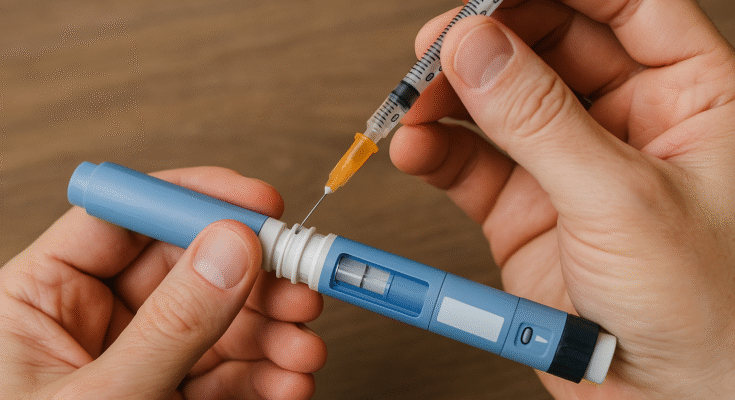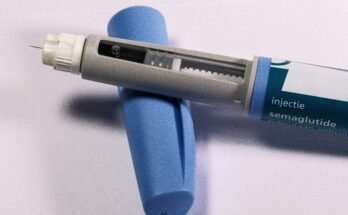The world of diabetes management and weight loss has been revolutionized by medications like Ozempic, a once-weekly injectable drug containing semaglutide. For those prescribed Ozempic, the convenience of its pre-filled pen is undeniable, delivering precise doses with minimal hassle. But what happens when the pen runs dry, and the cost of a new one feels like a punch to the wallet? The internet is buzzing with whispers of “hacks” to refill Ozempic pens, promising to stretch your prescription further. As an expert in pharmaceutical delivery systems, I’m here to dive into this murky territory with an engaging, no-nonsense guide. Let’s explore whether refilling an Ozempic pen is feasible, how it might be done, and why you should tread carefully.
Understanding the Ozempic Pen: A Marvel of Modern Medicine
Before we get to the nitty-gritty of refilling, let’s appreciate the engineering behind the Ozempic pen. This sleek device is designed for ease and precision, holding a pre-filled cartridge of semaglutide suspended in a sterile solution. Each pen is calibrated to deliver specific doses—typically 0.25 mg, 0.5 mg, or 1 mg—over a set number of injections. The pen’s internal mechanism ensures accurate dosing, and its single-use design minimizes contamination risks. Novo Nordisk, the manufacturer, has crafted a system that’s user-friendly yet tightly controlled to maintain safety and efficacy. Refilling it? That’s where things get tricky, as the pen isn’t designed for DIY tampering. But curiosity drives innovation, so let’s explore the possibilities.
The Motivation Behind Refilling: Cost and Access
Why would anyone want to refill an Ozempic pen? The answer often boils down to economics. Ozempic isn’t cheap, with monthly costs ranging from hundreds to over a thousand dollars without insurance. For some, stretching a prescription by refilling a pen is a tempting way to save money. Others face supply shortages, especially given Ozempic’s soaring popularity for weight loss. The idea of refilling a pen feels like a clever workaround, but it’s not as simple as topping off a water bottle. The process involves sourcing the drug, maintaining sterility, and navigating the pen’s complex mechanics—all while ensuring the medication remains safe and effective.
Can You Refill an Ozempic Pen? The Technical Breakdown
Let’s get to the heart of the hack: is refilling an Ozempic pen even possible? Technically, yes, but it’s a high-stakes endeavor. The pen’s cartridge is sealed, and accessing it requires careful disassembly. You’d need to remove the pen’s outer casing, extract the empty cartridge, and inject a new supply of semaglutide using a sterile syringe. Sounds straightforward? Not quite. Semaglutide is a delicate peptide that degrades if mishandled, and the cartridge must remain free of contaminants. Any air bubbles or improper storage could render the drug ineffective or dangerous. Plus, the pen’s dosing mechanism is calibrated for the original cartridge’s volume, so overfilling or underfilling could mess with accuracy. This isn’t like refilling an ink cartridge—it’s more akin to performing surgery on a tiny, high-tech device.
Sourcing Semaglutide: The Biggest Hurdle
Assuming you’re undeterred by the technical challenges, the next hurdle is obtaining semaglutide. Ozempic is a prescription-only drug, so you can’t just stroll into a pharmacy and buy a vial. Some turn to compounding pharmacies, which can prepare custom medications, but this is a legal gray area. Compounded semaglutide may not match the exact formulation of Ozempic, and quality control varies. Others look to the black market or international suppliers, but this is fraught with risks—counterfeit drugs, improper storage, and legal consequences. Even if you secure a legitimate supply, you’ll need to store it at 36–46°F (2–8°C) and protect it from light. Mishandling semaglutide can reduce its potency, leaving you with a pen full of useless liquid.
The Hack in Action: A Step-by-Step Hypothetical
For the sake of curiosity, let’s walk through a hypothetical refilling process. First, you’d sterilize your workspace to avoid contamination. Using a small screwdriver, you’d carefully disassemble the pen to access the cartridge. Next, you’d draw semaglutide from a vial into a sterile syringe, ensuring no air bubbles. You’d then inject the drug into the cartridge, reseal it, and reassemble the pen. Sounds like a science experiment, right? It is, but one with serious risks. If the cartridge cracks, the pen jams, or the drug is compromised, you’re out of luck. And if the dosing mechanism misfires, you could inject too much or too little, leading to dangerous blood sugar swings or side effects like nausea and pancreatitis.
Why This Hack Is a Gamble: Safety and Legal Risks
Refilling an Ozempic pen isn’t just a technical challenge—it’s a gamble with your health. The pen’s single-use design ensures sterility and dosing accuracy, and bypassing that compromises both. Contaminated or degraded semaglutide can cause infections or fail to control blood sugar or weight. Overdosing risks severe side effects, while underdosing could leave your condition unmanaged. Legally, tampering with a prescription device or sourcing unapproved drugs can land you in hot water. Novo Nordisk explicitly warns against modifying their pens, and healthcare providers echo this caution. The savings might seem worth it, but the stakes are high—your health isn’t something to hack lightly.
Alternatives to Refilling: Smarter Solutions
If cost or access is driving you to consider refilling, there are safer alternatives. Talk to your doctor about switching to a more affordable medication or exploring generic options (though semaglutide generics are limited as of 2025). Patient assistance programs from Novo Nordisk can reduce costs for eligible users. Some pharmacies offer discounts, and insurance plans may cover more than you think—check your formulary. If weight loss is your goal, lifestyle changes like diet and exercise can complement or even replace Ozempic in some cases. Compounding pharmacies might be an option, but only under medical supervision. These paths aren’t as thrilling as a DIY hack, but they’re far less likely to backfire.
FAQs About Refilling an Ozempic Pen
Is it legal to refill an Ozempic pen at home?
Refilling an Ozempic pen falls into a legal gray area. Tampering with a medical device or using unapproved drug sources can violate regulations, depending on your country. Sourcing semaglutide without a prescription is often illegal and risky. Always consult a healthcare provider and stick to approved methods to avoid legal and health consequences.
Can refilling an Ozempic pen save money?
In theory, refilling could reduce costs by extending a pen’s use, but the savings come with caveats. Sourcing semaglutide is expensive and risky, and improper refilling can waste the drug or harm your health. Patient assistance programs or insurance adjustments are often more cost-effective and safer.
What are the risks of using compounded semaglutide to refill a pen?
Compounded semaglutide may not match Ozempic’s exact formulation, leading to inconsistent efficacy or side effects. Quality control varies among compounding pharmacies, and improper storage can degrade the drug. Using it to refill a pen also risks contamination and dosing errors, which can jeopardize your treatment.
Conclusion
The idea of refilling an Ozempic pen is undeniably intriguing—a clever hack to outsmart high costs and supply issues. But as an expert, I can’t stress enough that this isn’t a game for amateurs. The technical, safety, and legal hurdles make it a risky endeavor, and the potential consequences outweigh the benefits for most. Instead of rolling the dice with your health, explore legitimate alternatives with your doctor or pharmacist. Ozempic’s brilliance lies in its simplicity and reliability—let’s not mess with a good thing unless we’re absolutely sure it’s worth it. Stay curious, but stay safe.

Lisa Caldwell is a clinical health writer and certified diabetes educator with a strong background in pharmacology and metabolic health. With over 12 years of experience in patient education, she specializes in translating complex research on GLP-1 medications like Ozempic into clear, practical guidance.




